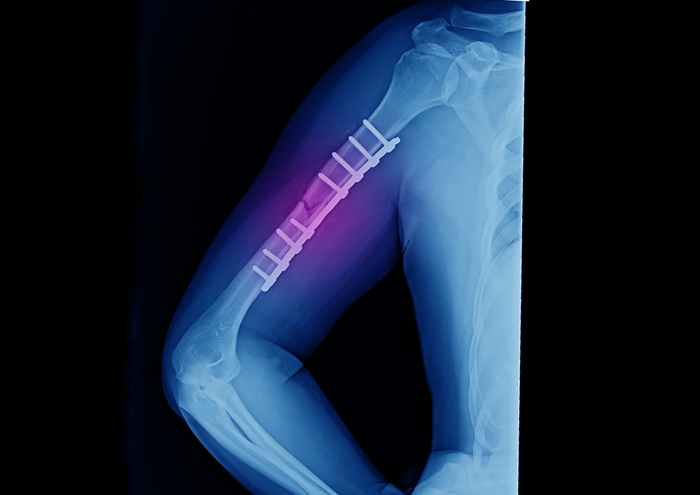Open Reduction Internal Fixation (ORIF) Treatment & Diagnostics in C Scheme, Jaipur
Open Reduction Internal Fixation (ORIF)
Open Reduction Internal Fixation (ORIF) is a surgical approach that orthopaedic surgeons perform in emergencies. You will not require an ORIF if your doctor can treat your fracture with splints or casts.
What is the meaning of ORIF?
ORIF or open reduction internal fixation is a two-step surgery that involves using the conventional method of treating a fractured bone as the first step. The second step includes using hardware to hold the bones together. Doctors use this medical approach to treat severe fractures when bones and joints get displaced.

Who should undergo ORIF?
- If you experience an accident and develop a grave fracture
- After a previous injury, if a closed reduction did not cure the fracture or heal the bones
- If the doctor cannot treat your fracture with a splint or cast
When to see a doctor at Apollo Spectra, Jaipur?
Usually, the ORIF is an emergency procedure. Doctors perform this procedure when the patient has a severe fracture, and the bone breaks into several pieces. If you have an accidental injury and it is an emergency, immediately visit the doctor.
Request an appointment at Apollo Spectra Hospitals, Jaipur
Call 1860 500 2244 to book an appointment.
What are the preparations you need to take before ORIF?
- The doctor will ask you to undergo X-rays, a complete physical routine exam, CT scan, blood tests, and MRI scan.
- The doctor will ask you to take blood-thinning medicines some days before the surgery.
- It is best to let your doctor know about allergic reactions that you have, like anaesthesia allergy or allergy due to some substance.
What occurs during the surgical procedure of ORIF?
- Your doctor at Apollo Spectra, Jaipur will perform the ORIF in two steps. Before that, he will give you general or local anaesthesia.
- If you are facing trouble breathing, the doctor will let you use a breathing tube.
- The surgeon will make incisions in the fractured area. Following the open reduction step, he will move the bone back to its original position.
- Next, the surgeon will use the hardware to keep the bone together. He can use metal rods, pins, screws, or plates.
- He will then stitch the cut area and apply a bandage. He might also use a cast or a splint in the arm or the leg.
How does the recovery process feel after ORIF?
- Recovery after ORIF generally lasts for 3 to 12 months. It can take longer if the fracture is more severe and the location is more sensitive.
- As your healing process gains pace, your doctor will ask you to go for physiotherapy and do some rehabilitation exercises.
- Keep the incision points clean to prevent bacterial infection from happening in the place.Try not to move the fractured parts as long as you can after the ORIF surgery.
- Your doctor will prescribe pain relievers after the ORIF surgery, which you will need to take daily.
- To decrease any swelling in the surgery point, lift the part to put ice.
What are the complications associated with ORIF?
- Blood clots and bleeding
- Damage of the ligament and tendons
- Crippling of blood vessels and nerves
- Losing mobility or reduction in it
- Infection
- Muscle spasm
- The metal component gets displaced
- The bone healing is abnormal
- You can hear sounds of popping and snapping
- Allergic reaction to anaesthesia
- Developing compartment syndrome with pressure in the arms and legs
- Hardware causing chronic pain
- Numbness and tingling sensation
- Redness, swelling, bleeding, and pain
- A discharge oozing from the surgery point
CONCLUSION
The ORIF treatment has a high success rate amongst all the patients, and the hospital usually discharges the person the same day of the surgery. It is also beneficial as one does not have to use plaster for long.
You will not feel any pain during the ORIF surgery as you will be under the effect of anaesthesia. After the surgery, you will experience swelling and pain in the surgery point. This pain will last for a maximum of three weeks. The pain will keep diminishing and dissolve by the end of the sixth week.
Our Top Specialities
NOTICE BOARD
CONTACT US
CONTACT US
 Book Appointment
Book Appointment


.svg)
.svg)
.svg)
.svg)








